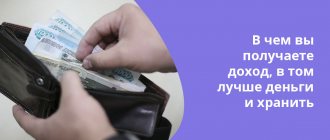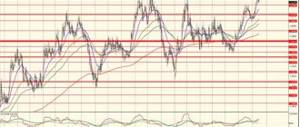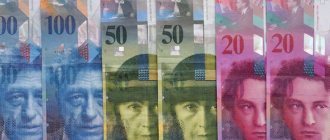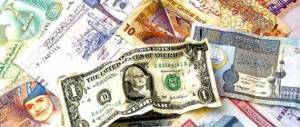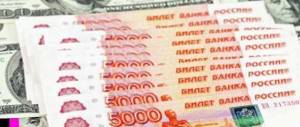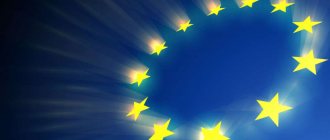Lazy Investor Blog > Reports
According to Yandex statistics, Russian users request the US dollar exchange rate 100 times more often than the euro. Moreover, according to the same statistics, the euro in Russia is inferior in popularity even to the Tajik somoni and the Kazakh tenge. Does this mean a lack of interest in the European currency, and where do Russians keep their savings? Let's try to understand this topic.
Currency of income
When considering where to store your savings, we advise you to listen to experts who say that where you receive income is better to keep your money. For example, if you make profits in rubles, there is little point in converting them into dollars. First you will spend money on the initial conversion, then you will pay more when you convert the currency back into rubles.
But it all depends on the situation. For example, if the purpose of savings is to further spend them on the purchase of foreign real estate, it makes sense to open a foreign currency deposit and convert your rubles there. Euros and dollars are currencies that have shown their stability and can be invested in.
When deciding to store money in dollars, euros or another currency, a person must be aware of the risks of currency fluctuations. Sometimes it is impossible to predict how the situation will develop in the future, especially now, when the global financial crisis looms ahead.
If you receive money in rubles and spend it mainly in the same currency, then it is better to keep your savings in rubles, using investment instruments.
What determines interest in the euro
So, the demand for foreign currency from individuals in Russia is associated not only with the desire to preserve savings, but also with the creation of a “vacation fund.” In any case, this applies to the euro. The standard advice we often hear is to buy the currency that you intend to spend in the future. Apparently, the majority of Russians share the same point of view. This is exactly what follows from an analysis of Google Trends data on the popularity of the queries “Dollar exchange rate” and “Euro exchange rate” in Russia as a whole are quite comparable. Here is a graph of the dynamics of these requests over the past five years:
The peak of user interest occurred on March 8–14, 2021, during the memorable collapse of stock markets. Then the relative frequency of requests for the dollar turned out to be three times higher than for the euro. List of TOP 5 regions in which the maximum interest in the euro exchange rate has been noted over the past five years:
I also recommend reading:
Results of public investments in June 2021
My investments in June brought a profit of $5000.1 or 18.3%
| Region | Popularity of the query “Dollar exchange rate” | Popularity of the query “Euro exchange rate” |
| Republic of Karelia | 49% | 51% |
| Kaliningrad region | 51% | 49% |
| Pskov region | 54% | 46% |
| Leningrad region | 60% | 40% |
| Saint Petersburg | 62% | 38% |
It is striking that all these regions are located in the West of Russia. On the contrary, the regions with maximum interest in the dollar are concentrated in the East:
| Region | Popularity of the query “Dollar exchange rate” | Popularity of the query “Euro exchange rate” |
| Jewish Autonomous Region | 92% | 8% |
| Amur region | 90% | 10% |
| Primorsky Krai | 90% | 10% |
| Chukotka Autonomous Okrug | 89% | 11% |
| Sakhalin region | 89% | 11% |
These data clearly speak in favor of the economic specifics of the regions as a factor in the popularity of a particular currency. The more actively a region is involved in trade and other relations with Europe, the more popular the euro is there. In turn, this conclusion suggests that the “internal” features of currencies are not yet significant for Russians. In their preferences, they often do not take into account either the key rates of central banks, or the economic indicators of countries, or the balances of foreign trade between them. For example, the Swiss franc, which is reliable but exotic for Russians, is practically not in demand.
What the experts say
The question of which currency is best to keep savings in practice is not simple; it is impossible to give an unambiguous answer. It depends on the currency in which income is received, in which expenses are incurred, on the volume of savings, and on the period of savings.
Now it is difficult to predict how the rates, which have recently been unstable, will behave. External circumstances can “scare away” a stable situation, as was the case at the beginning of 2021. Due to oil transactions, the exchange rate of the ruble against the euro and dollars has fallen significantly. This is an external circumstance that was difficult to predict.
As a result, those who previously decided to store money in euros or dollars benefited significantly. The exchange rate of the same dollar increased from 62-63 rubles to 75-80. The capital of Russians' foreign currency investments has grown significantly; some have decided to convert funds back into rubles while the exchange rate allows this to be done with a good profit.
Situation as of April 21, 2021:
But still, when analyzing which currency to store your savings in, you should start from the period for which the investment is made:
- for the short term. For example, you need to save up for a vacation or to buy a car. It is better to opt for rubles. Inflation will not have time to eat up capital, plus there will be no losses on conversion. In addition, in the short term, significant changes in the exchange rate can be observed, which can reduce capital;
- medium term perspective. If you do not plan to touch your capital for the next 3-5 years, consider the option of saving money in foreign currency. Experts advise choosing dollars, since today it is the most stable currency that is always growing;
- long-term perspective. If investments are made for a long period exceeding 5-7 years, financial experts advise using diversification, that is, “putting your eggs in different baskets,” making the capital multi-currency.
If you don’t have enough experience in this area, you can contact investment consultants who will give you the right vector depending on the situation.
